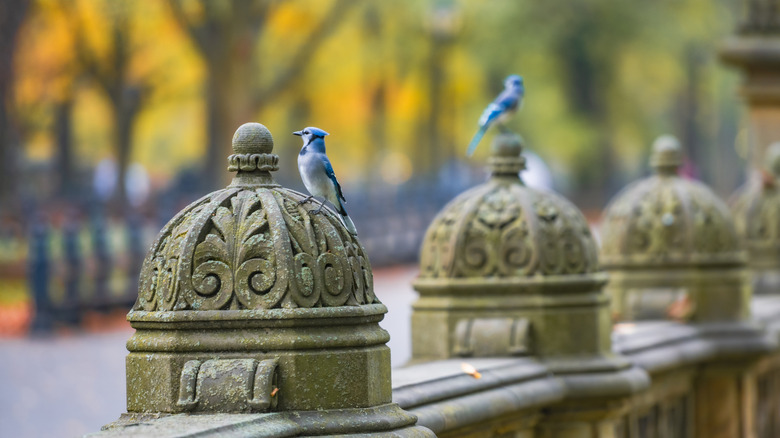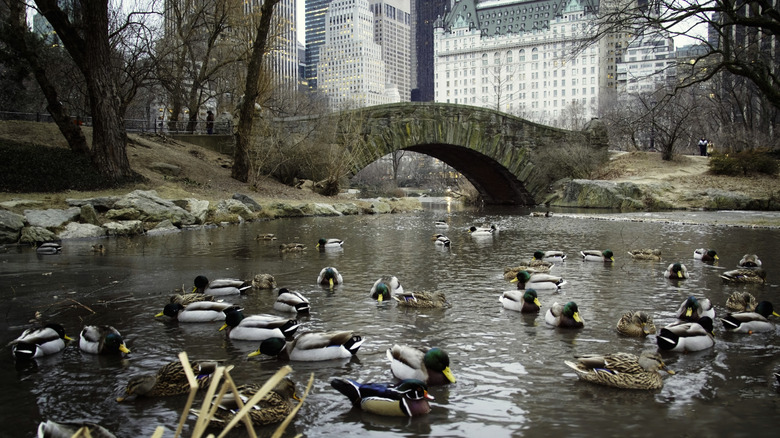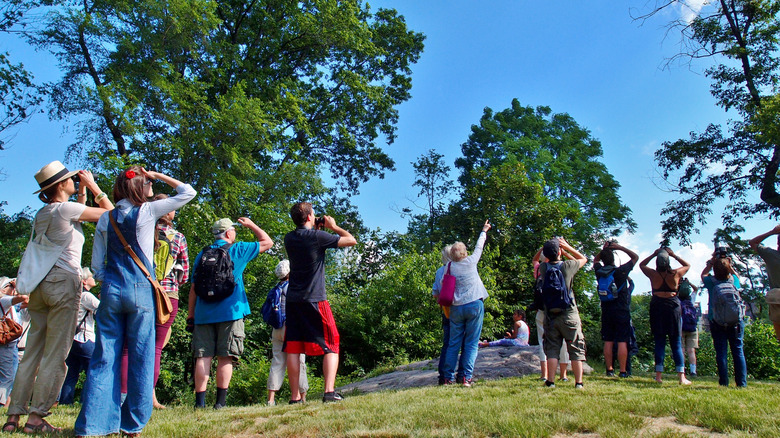The Popular New York Destination To Spot Over A Quarter Of America's Bird Species
New York City's Central Park may be known as a favorite attraction for tourists, drawing in crowds for its pond-side paths and stone arches, but birdwatchers know it for something else. It's true that pigeons are aplenty all over NYC, but Central Park has been host to over 280 different bird species, many of which migrate along the East Coast during the spring and fall. Given that there are around 830 bird species in all of North America (according to the National Audubon Society), this means about a third of those species have been spotted in Central Park.
The birds of Central Park aren't just fodder for pleasant background noise — a whole culture of birding has developed around the park's flyers. Country Living even named Central Park the fifth-best place to go bird watching in America, citing, in particular, its abundance of warbler species. You could spend a whole weekend sleuthing through the park's vast meadows and wooded trails to try to tick off as many birds from the NYC Bird Alliance checklist as possible, though it helps to know where the hotspots are in advance. Or, you could join in on one of the park's special birding events, such as its weekly guided birdwatching walks or the annual Christmas Bird Count.
Birding hotspots in Central Park
All around Central Park, you can find a mix of birds that live there permanently as well as those that migrate seasonally. Migration is crucial to Central Park's bird population because it serves as a stopover on the Atlantic Flyway, a major migration route along the East Coast of North America that millions of birds follow each year. It's in Central Park where the birds make nests in habitats such as the Ramble's dense woodlands or water sources such as Turtle Pond, and where they fuel up on food sources. It's no wonder, then, that the National Audubon Society named Central Park an Important Bird Area.
At 843 acres, Central Park is full of bustling bird nooks, including Strawberry Fields, the little spot where you find musicians and birds singing side by side. Probably the most popular birding spot in the park is the Ramble, a wooded area in the park's middle teeming with migrating songbirds along its labyrinthine trails. The North Woods is a great spot for birding if you want something more remote; by its pool are ducks and herons, while up in the willow trees are flycatchers and warblers. Other bird-laden areas worth exploring are the Hallett Nature Sanctuary around a pond in the park's southeast corner, the Jacqueline Kennedy Onassis Reservoir (a prime spot for waterfowl), and Belvedere Castle (a perched lookout point great for seeing raptors).
Tips for taking part in Central Park's birding culture
Central Park has a passionate community of birders. "On any given morning, a few other Central Park regulars and I might form an impromptu posse. Together, we pass a few hours in quiet wonder before racing off to work," said birder and science writer Christian Cooper in The New York Times. You could grab your binoculars and go explore on your own or join a guided tour — every Thursday through Monday, the park hosts "Bird Watching with Birding Bob." It's about a three-hour long tour meandering through less visited areas and led by birding experts for a small fee.
In terms of timing your visit, "the earlier you get there the better," park birder Alice Deutsch said in Audubon. Seasonally, though, you're bound to find birds at any time of year. Spring migration brings cuckoos, warblers, and sandpipers while the fall migration is a great time for spotting thrushes, sparrows, and raptors — not to mention the park has some of the best spots for fall foliage viewing. In the summer, look for red-tailed hawks and orioles. In winter, there are plenty of owls and wintering waterfowl. Central Park also offers some unique events in winter, including the locally beloved annual Christmas Bird Count, during which a legion of birders scouts the park to count and categorize its birds. If you're flying in, the closest airports are LaGuardia and JFK. From there, you can easily reach the park by subway, bus, or taxi — popular entry points for birders include the 103rd Street entrance near the North Woods and the 81st Street entrance near the Ramble.


